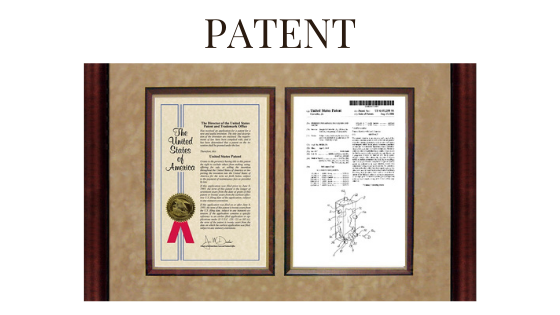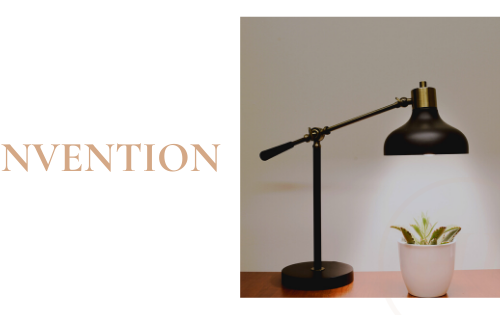-
The Priority Date
The Priority Date is a very important date in the timescale for patenting a new idea or invention, since it is the date of first filing the patent application describing the idea or invention, at the Intellectual Property Office, and therefore causes a metaphorical clock to start ticking during the lengthy process towards eventual grant of a patent for the invention, which can take up to four and one half years measured from the Priority Date.
Some may argue that the use of the word “idea” is not correct, since an idea is not an invention. However, you must start somewhere, and the establishment of the Priority Date, via the date of filing of the first patent application describing only an idea, even if it is not yet an invention, (i.e. where the patent application is only describing the basic concepts that you have, in the form of an identified need, with only a partial solution to that need) at least shows the world, via your first filed patent application, what it is you are attempting to protect as written on how to file a patent with InventHelp.

Often, an idea, which is not yet an invention, becomes an invention after development and such development leads to improved patent specifications, which are filed at intervals, in the form of improved patent applications, up to the very last patent application, which must be filed before twelve months have elapsed, measured from the date of filing of the first patent application describing the invention.
When the final, definitive version, of the patent specification describing an invention, is filed as a patent application at the Intellectual Property Office, at no later than twelve months measured from the date of filing of the first patent application a request can be made for this definitive version to be subject to Examination, with all of the previously filed applications associated with it according to their dates of filing as you can see from this how do you patent an idea with InventHelp post.
-
Important Time Factors Related to Patents
If you think you may be interested in getting foreign patents, it is very important that you apply for a patent before making your invention public. Making an invention public can be offering the invention for sale or selling the invention, having it described in a publication, or revealing it to anyone without a confidential disclosure agreement where they agree to keep your invention secret.
File a Patent Application in the US, Then File for International Patents
Because of international agreements with most countries, you can file a US patent application and then file for international patent applications within one year of the US filing date and have the advantage of the original US filing date in the foreign countries. After one year from the US filing date you no longer have the advantage of the US filing date and, if the invention has been made public, you will not be able to file in most of the foreign countries. Canada is an exception, They allow filing a patent within two years of making the invention public as explained on https://vinnews.com/2022/01/01/get-help-with-patent-protection-from-inventhelp/ post.

You Lose Your Right to File for a Patent If You Don’t File in the US Within One Year of Making the Invention Public
In the US you can actually apply for a patent application within one year of making the invention public. If you wait more than a year after making the invention public, the invention becomes public property and you are no longer able to obtain a valid patent in the US. Exceptions are make for testing of the invention. That is why it is advisable to have professional help from agencies such as InventHelp patent agency.
You Should Apply for a Patent Before Making the Invention Public
It is always best to apply for a patent before making the invention public. If you rely on confidential disclosures to reveal the invention to others and they make the invention public, you may still lose your patent rights because of the public disclosure.
-
Best Glock Home Defense Pistol
While the Glock 22 may be the most preferred choice among law enforcers in the United States, opinions are divided when it comes to the best Glock home defense pistol. With criminals becoming bolder everyday, owning a handgun may be the best defense, or deterrent at the very least, against attacks. While pepper sprays, Taser guns, and security cameras can help turn back criminals, these can sometimes be useless when a victim is faced with an armed attacker. Hence, despite opposition from some quarters, owning handgun has become a priority for some people.
The Glock has become synonymous with home defense over the years. There are a number of things that have made it the weapon of choice for home defense; top among them is the Glock’s safety mechanism, which is well suited for home users who — more often than not — lack the proper training to handle firearms. Another factor that has contributed to the line of pistols’ popularity among civilian users is its polymer frame, which makes Glocks some of the lightest guns in the market. Of course, the fact that these handguns are also among the least expensive make them the top choices for home defense. And if you want some really great gun deals, you should search on internet for online gun dealer portals such as Smokin Guns.

Some people prefer the Glock 21 as the best Glock home defense pistol, mostly for its capacity and reliability. The Glock 21 is a full-size .45 ACP semi automatic with a 13-bullet capacity in each quick reload magazine. Its magazine capacity makes it ideal as a home defense pistol as it gives the user more rounds to fire—especially help for untrained gun owners. Compared to a revolver, the Glock 21 is more reliable and more suited as a home defense pistol.
Also among the top contenders for the best home defense guns is the Glock 17, which is the first variant to come out from the Glock line of handguns. The Glock 17 is also semi-automatic pistol that comes with a 9x19mm Parabellum round. Its compact design makes it very suitable for people who prefer their handguns inconspicuous. Other choices for the home owner concerned for his safety is the Glock 30, Glock 19, and the Glock 37 .40GAP. In the end, though, the type of pistol may not matter anymore. Any of the choices mentioned above are suitable home defense pistols. What’s more important in choosing the best Glock home defense pistol is that the gun fits the preferences of the one pulling the trigger.
-
Latin To English Translator
Basic translations from one language to another can be found online at no cost to the user. With Latin to English translation free online, translators may not be able to translate the intent of serious content, but they can translate small amounts of text accurately. Many online translator sites, such as EN.Eprevodilac.com, work very much like an online dictionary, giving word for word translation as opposed to the intent of the document that targets a specific audience in the way a professional human translator.
Quality translation from one language to another really requires a deep understanding of both languages, including slang terms that are not commonly found in computer generated translations. The computerized free translation gives a very accurate translation, word for word, without understanding the need for added words or the need for removing certain phrases to make the entire text actually make sense. The lack of this feature detracts from the computerized translator’s usability in large settings. When a deep understanding of the language is required, using a professional human translator is the best option.

Latin To English Free Translation
Often, computerized Latin to English translations can be used to translate short text for flyers and headings. They can be particularly useful for learning a language or verifying the conjugation of certain words. For Latin to English translation free Latin translator to English offers a direct translation of the words, much like what one would find in a dictionary.
Because the Latin language is often longer in text than the English language, users can expect that the resulting translated text will be shorter in length than the original text. The translation may actually lose up to one third of the text coverage. Were the translation to be reversed, from English to Latin, the resulting text would be considerably longer, often adding as much as thirty-three percent to the text coverage.











